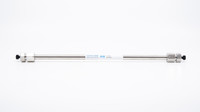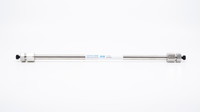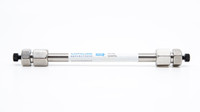Carbohydrate Analysis

CARBOSep Columns for Carbohydrate Analysis
- Stable operation at temperatures up to 95 °C
- Reliable performance with consistent polymer chemistry from batch to batch
- Uses the simplest and safest eluent—pure water
- Wide range of column options combining porosity, particle size, metal ligands, and hardware formats
CARBOSep columns are engineered specifically for high-resolution separation of sugars, sugar alcohols, and other carbohydrate species using a highly reproducible ligand-exchange mechanism. In this mode, the hydroxyl groups on the carbohydrate analytes interact with positively charged, metal-loaded functional groups on the polymeric substrate. A pure water mobile phase—one of the safest and most straightforward eluents—competes for these ligand sites, producing predictable retention and selectivity across a wide variety of carbohydrate structures.
Beyond ligand exchange, carbohydrate separations also benefit from secondary mechanisms such as size exclusion and normal-phase partitioning. CARBOSep columns leverage low cross-linked polymer gels, optimized porosity, and carefully selected metal ions to deliver balanced selectivity across these mechanisms. Concise Separations has created one of the most complete carbohydrate column portfolios available, offering multiple combinations of metal counterions, particle sizes, and polymer cross-linkage levels to fine-tune resolution, efficiency, and run time.
Because polymeric materials offer exceptional chemical stability, CARBOSep columns deliver long service lifetimes when operated within recommended pressure and temperature limits. Temperature equilibration is essential before starting flow, as temperature and flow rate directly influence system backpressure. High-purity water (≥18 MΩ) is required to protect the polymer matrix and preserve column selectivity. Proper sample preparation, guard columns, and in-line filtration help prevent particulate contamination and extend column life. In general, columns with higher polymer cross-linkage and larger particle size tolerate higher flow rates before reaching maximum allowable pressure.












